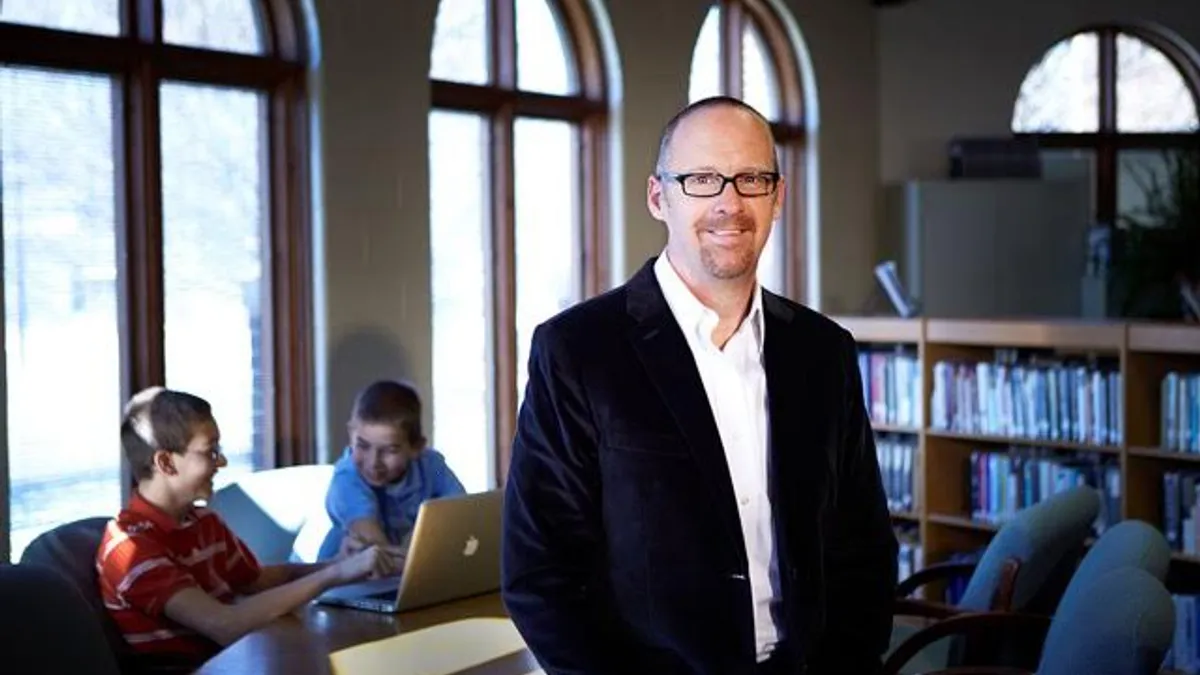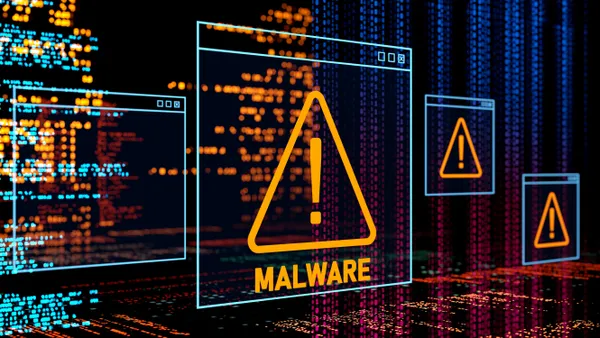Happy final day of Open Educational Resources (OER) week! Since launching in 2012, OER week has evolved into an event with a global following, attracting hundreds of contributors and participants from 130 countries. You can find event listings here.
In honor of OER week, Education Dive spoke with OER expert and Knovation founder Randy Wilhelm. Recently, Wilhelm took the stage at TEDX, giving a talk called, "Igniting the hope of knowing."
EDUCATION DIVE: You’ve worked on solutions for digital content delivery since 1999. Why did you get into the field?
WILHELM: We envisioned a time when content from the web would indeed be very central to instruction in K-12 schools. We knew that at some point there would be too much content freely available to effectively choose the best options for the students, so we began to curate, contextualize, or tag, and maintain online resources, including OER, way back in 1999. We believe passionately in the statement, “All of us are smarter than any of us,” so to that end, we want to bring the best of “all of us” to every learner.
What problems appeared at the outset of OER development? What kind of problems were pervasive over time?
WILHELM: In the beginning, there was no standard meta tagging schema, no viable taxonomy, no standards, so we created all these things. We used advanced technology and highly-educated teachers and educators to professionally and effectively evaluate, align and maintain OER for use in schools. What is interesting to me is that we certainly felt that by 2016 there would be greater use of OER in classrooms, and that teachers would have been equipped to do self-curating on the fly, but that is not the case today.
What are the biggest challenges, in general, to OER use in the classroom?
WILHELM: Open Education Resources are generally small pieces of content focused on a specific lesson plan, and what teachers need is to have that content organized and aligned to the district curriculum, organized in easy-to-search and share folders and delivered in the district platform of choice. Sometimes that platform is an LMS, sometimes a CMS, but it is important to have the content delivered where the teachers are used to working. Having separate platforms is inefficient and adds unnecessary complexity to the teacher workflow.
What are some hurdles for districts seeking to utilize OER?
WILHELM: Teachers are being asked to find content for learning, to actually curate content for their classroom. This added burden has really put stress on the teachers, with some reports saying that they are spending an average of up to 12 hours per week searching for content. Everyone knows there is ample OER on the web to instruct virtually any class, but finding quality OER is entirely more difficult than districts anticipated. Additionally, districts further into their use of OER content have discovered that maintaining the content chosen is in and of itself a challenging task. With around 1 of 5 pieces of OER having some kind of dead link problem within a year, the turnover of content is overwhelming and causes teachers to not trust that the content will be available when needed.
How can schools avoid common OER pitfalls?
WILHELM: Find an online resource provider that has curated the content for your teachers so they can sort through well-vetted online content to select the content that works best for their students and classroom. Align the curated content to their curriculum map to give their teachers a head start in their transition to digital. Find a provider who will maintain the content and assure it's validity year over year.
How can school leaders evaluate OER offerings?
WILHELM: Effective OER curators will tell you that you must review and evaluate for categories like: ads, authority, structure, technological interactivity, cognitive effectiveness/deeper learning, degree of alignment to standards and curriculum and quality of instructional and practice exercises. Knovation has a 127 step certification process that allows us to vet and evaluate every piece of the 360,000 plus collection of free online resources to assure you are offering your students and teachers the best of the free online resources available.
How can low-income districts best take advantage of OER?
WILHELM: Some districts have reported that lower income schools have higher teacher turnover, a larger percentage of first-year teachers and greater diversity and mobility in the student body. If these same districts were to promote an active use, or mandatory use of OER, the teachers would be ill-equipped to complete those curations with fidelity. These districts have the same type of frustrations as other districts, but to a more acute level. OER provides the promise of free [content], but unless the content is curated, professionally-evaluated, tagged and standards-aligned, it is by no means free or easy to find and use.
Do you have advice for districts just starting to learn about OER?
WILHELM: Have clear expectations of how equipped your teachers are to be your curators of free content. Districts generally do not do that well, and it keeps educators from doing what they do best. The opportunity cost for this assignment is high, and not at all worth the cost.
Would you like to see more education news like this in your inbox on a daily basis? Subscribe to our Education Dive email newsletter! You may also want to read Education Dive's look at how strong teacher induction programs are key to educator and student success.







 Dive Awards
Dive Awards






